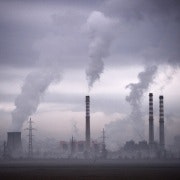Leaving the RET in a poor state
How far should state governments go to drive greater use of zero emissions electricity?
It is not a minor question, given that there are state elections coming up in two of the three largest power consumption areas within months and the Labor incumbents are desperate to simultaneously woo and ward off the Greens.
Despite the current shenanigans at the federal political level, this is one issue at least that does not require the immediate attention of whoever finally stumbles in to Quentin Bryce's drawing room to claim the prime ministership. This is because the federal parliament passed the renewable energy target (RET) this year in a workable form.
The new RET, as Origin Energy chief executive Grant King explained to Climate Spectator editor Giles Parkinson, is all clogged up for between two and three years thanks to past silliness with solar heaters and so forth, but it will eventually unplug and start delivering thousands of megawatts of generation, mostly wind farms, towards the 2020 target.
Meeting that goal, by the way, will contribute 40 million tonnes of the 140 million tonne annual carbon abatement target for 2020 to which the major parties are committed.
Politically, however, the RET does not deliver enough to help Victoria's John Brumby and Kristina Keneally in New South Wales in their upcoming polls tasks. Further down the road, it won't help the beleaguered Anna Bligh in Queensland either.
Which is why Bligh won't be the only political leader who has advisers carefully reading the submissions to the Queensland parliament's environment and resources committee, which is presently running an inquiry into renewable energy.
Major companies and substantial industry associations are treating the review seriously and their submissions are now all sitting on the committee's website, providing useful information for more than those residing in the Land of The Mad Hatter.
Infigen Energy, the largest specialist Australian renewable energy business, now running five wind farms with 509MW capacity, has canvassed in some detail the case for Bligh's government running a harder RET race than its present commitment to deliver 9,000 gigawatt hours of green power by 2020 – not nearly enough to cover the forecast increased demand for the state, let alone replace any existing fossil-fuelled generation, and representing 13 per cent of market share at that point compared with South Australia's 33 per cent target, the country's largest.
One of Infigen's interesting points is that the more centralised and bureaucratic the regulatory process in the states, the poorer the track record for project approvals. The company says allowing shires in Western Australia and SA to be the responsible authorities for wind farms has seen projects get up and running with little or no controversy, enjoying "overwhelming community support.” In Victoria and NSW, on the other hand, just sticking up a mast to monitor wind strength, a basic first step in pursuing a wind farm project, requires a planning permit.
However, Infigen's submission also highlights one of the political pressure points of renewable energy development: price. Last financial year Queensland had the lowest wholesale electricity price on the mainland ($33.45 per megawatt hour compared with $55.68 in South Australia and $44.14 in NSW). This, the company points out, serves to make green generation investment in the state less attractive.
The Queensland Resources Council, in its submission, which supports a price on carbon, buckets the RET for its costs to consumers, claiming that the current federal legislation will deliver carbon abatement at around three times the cost of the emissions trading scheme that Kevin Rudd abandoned. The cost of building wind farms, it says, is 2.5 times higher than open cycle gas generation.
Keith Orchison, director of consultancy Coolibah Pty Ltd and editor of Powering Australia yearbook, was chief executive of two national energy associations from 1980 to 2003. He was made a Member of the Order of Australia for services to the energy industry in 2004.
















